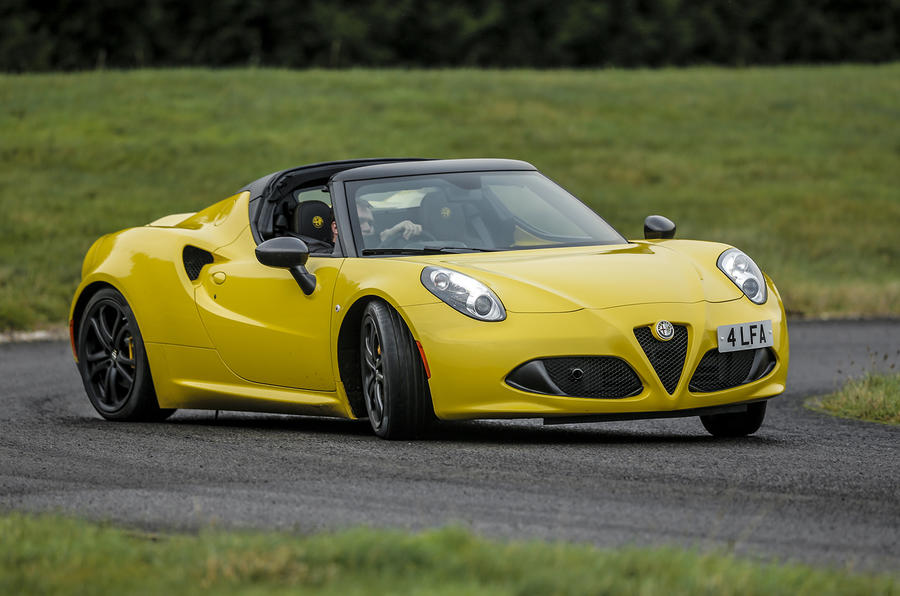What is it?
It’s the first time we’ve driven Alfa Romeo’s 4C Spider in Britain. Alfa says it has made a few tweaks to the 4C since the last time we drove one in the UK. It’s disinclined to say what, exactly, but the most notable thing about this yellow example is, obviously, the fact that the roof comes off, not unlike a Lotus Elise’s.
To remove it takes about the same sort of time as the Lotus's, but the Alfa’s seems better insulated. As well it ought to be, because the Spider costs a gnat’s under £60,000, which is a genuinely unfathomable £8000 more expensive than a version with a roof. At that premium, it should be better insulated than my loft.
To its credit, the Spider feels no more flexible of chassis than the 4C coupé; both have the same carbonfibre tub and, if carbonfibre is good at anything, it is providing lightweight rigidity and purpose to a chassis. The exposed bits look good, too, in a cabin that is for the most part well finished and, for the most part, in possession of a good driving position.
The fundamentals are there, in other words, so it's a shame that the seat bases are short and that the steering wheel, a two-spoke-only affair and nearer square than round, is stupidly awkward to grip in a quarter-to-three position or to gain easy hold of while you’re turning it.
These things are frustrating because the otherwise the driving position is straight, with a brake pedal perfectly aligned for either left or right-foot braking (the 4C is dual-clutch automatic only), and the steering wheel adjusts widely for both reach and rake. It could be excellent in here.
Get used to that theme: the one where fundamentals are in place but somehow, in the details and the execution, the 4C sets out to frustrate.




































Join the debate
Add your comment
Simply insane not to offer a
Sorry Zimmerit you are quite right.
Where does it say the build quality is poor?